Avengers Annual #10, Marvel Comics, 1981, Graded 9.6 Raw by CBCS sold for $87.
I saw this on eBay thought this deserved a write up.
So CBCS has started this raw grading service and books graded through this service are starting to pop up everywhere. Obviously there is not enough data to tell whether the hobby has embraced this new service or not.
This may be revolutionary. Remember that the CGC 3rd party grading service opened the floodgates to online commerce for back issue comics. Could this service usher in a new level of online commerce for comics not graded in those thick and expenses cases?
This copy of Avengers Annual #10 cost $10 to be graded I believe and it sold for a healthy $87, just $3 less than the price paid for the last CGC 9.6 copy according to the GPA site.
So will this take off?
I know there are benefits to collectors, collectors can buy at a safety level not possible without this service. Collectors get an accurate grade and they get a page count check. This is good for collectors. Note that there is no restoration check with this service.
The worry here is what happens to the grade’s integrity once the book has been in circulation, traveled to 15 conventions and been handles by 100 different people. How do you sell it as a 9.6 a year later if it got banged around a bit.
I’m going to remain cautiously optimistic here because I know this is a service the buyers will really like.
Advantage Seller. $10 bucks to get it graded leaves lots room for seller to make money but buyer has bought it close to the price graded issues get without the protector.

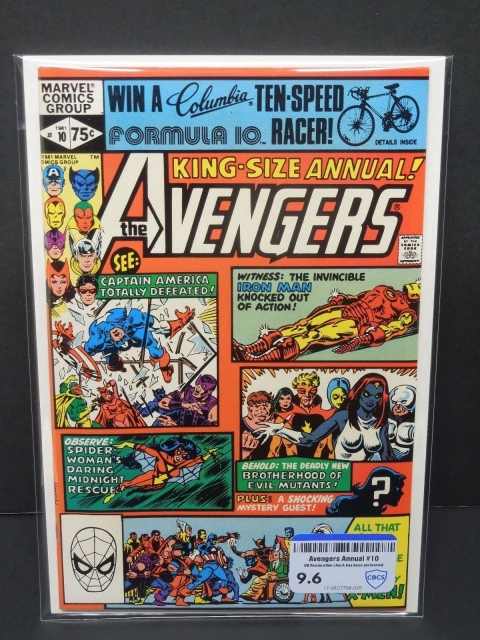
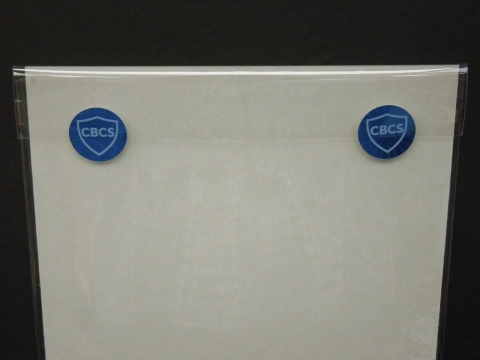
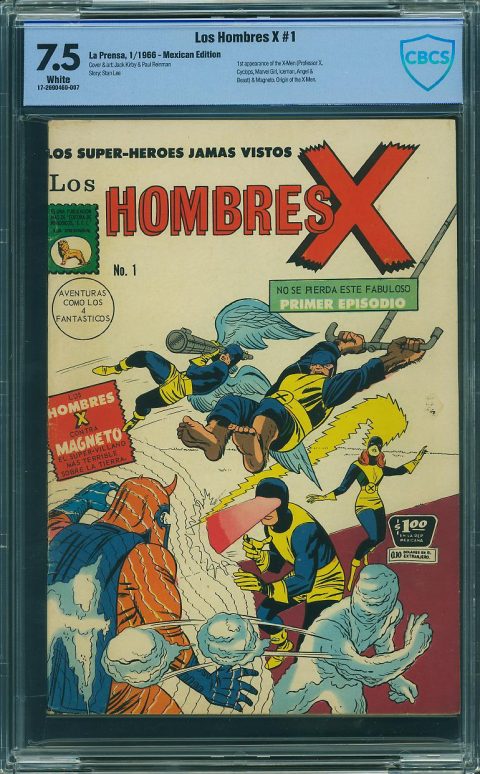
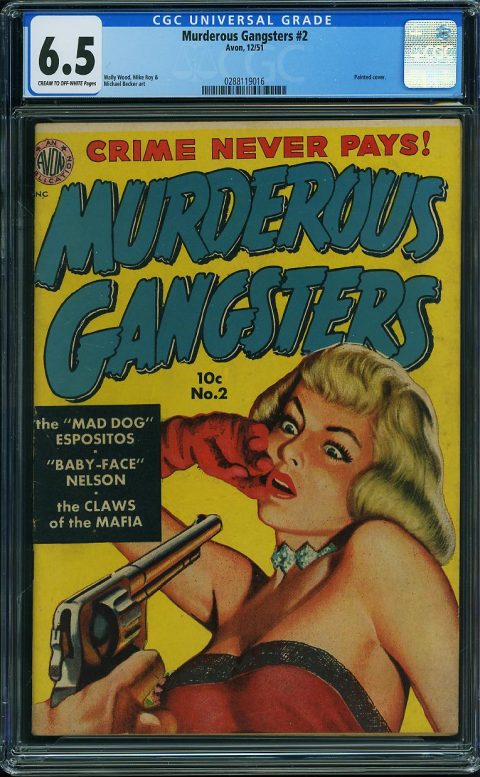
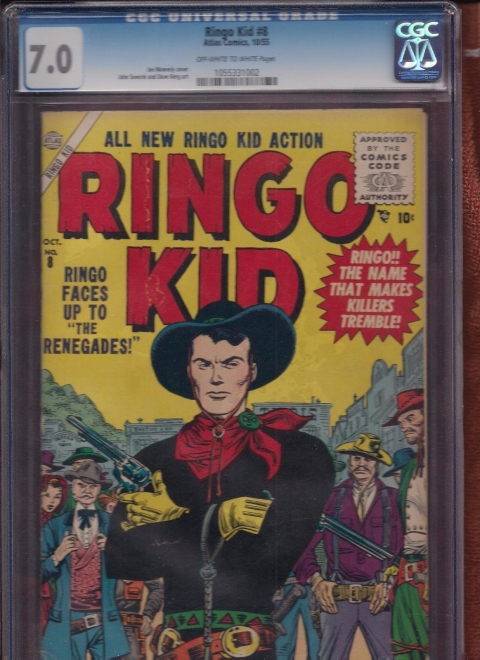
Walter,
Well, well, well! Without deep pondering, I am with you. I think is is a brilliant new move and even with the caveats, I applaud it. It’s certainly a way for collectors who want a grade–but don’t want to seal the book and lose the ability to look at it…can get one. I don’t subscribe to this but can understand some would.
You are right about the book getting bounced around, that’s a problem. But regardless, I see this as a very positive step. I buy Golden Age books and break them open, but it certainly does seem like a waste, since I don’t buy anything in high grade and would rather buy raw books any day, as long as the grading is accurate. I buy frequently from Heritage Sunday Nite auctions, and I barely notice whether a book is raw or graded–I do expect an ungraded book may be a 1/2 grade or so looser than a graded book, but I can compensate for that in my bidding. I don’t pay more than that slight grading difference bump for graded books.
Case in Point–my favorite local dealer A-1 Comics got several Canadian whites, raw. I went over them and picked out three I wanted, two Robin Hoods and a Rocket. 4.5, 5.0, and 2.0, respectively. He got them graded by CBCS and I ended up buying them anyway, once he priced them. Now it pains me to break them open, but I will eventually so I can enjoy them. But what a waste of time and energy. He is one of the best graders I know. This new alternative at least would be a step in the right direction on a situation like this one…
Thanks for the news, it’s certainly opens up a whole new discussion point.
I think its great for a whole host of reasons. The whole “certified” (by whom? What certifying body established standards and gave these guys licenses?) grading thing caught on too easily and speaks to collectors’ abdication of responsibility, frankly. Thank you for correctly using the term “third party.”
To my mind, what slabs have accomplished is they have allowed newer collectors to learn less and buy with “confidence.” But humans make mistakes. that is why PGX is shunned; but on the other hand people like to assume the big two grade with Papal infallibility.
The rules haven’t changed. A comic is worth what someone will pay you for it. Yes, I’m in the minority, but if the book in the slab looks better or worse than the # in the corner, that would matter to me. IF I feel its graded too high, the only thing the assigned grade does is maybe make it easier to sell to someone else who blindly trusts the big black number, as many do. (Often rightly, but also often too readily.)
What should have been a niche service really blew up big time, and perhaps business is settling down so they are expanding their offering lines as collectors realize there is often negative value in slabbing many books?
From day one, I have liked the concept in a vacuum, but ultimately it trivializes the hobby. Unlike cards and coins that can be fully appreciated in a holder, these are meant to be read. I’m all for preserving top specimens of important/rare/valuable items as the first eras of comics are now fifty plus to almost 100 years old, but really if you need a $35 service to determine a $200 book from a $150 copy, isn’t that too stressful to be your hobby?
I also think the false platform of infallibility trivializes the ability of the best graders among long-time dealers/collectors. I have not met every single grader for these companies; have you? Borock and Stephan aren’t handling everything themselves. I would put a panel of you two, Walt and Bud, along with a Gary M. Carter against their line-up any day, with no disrespect intended to the hard-working service graders.
Further, the 9.2 vs 9.4 vs etc thing at the top of the scale has skewed values and created a false concept of “investment grade.” These things have no underlying business fundamentals; they don’t throw dividends, split, buy themselves back, etc. There’s buying at the right price and selling at the right time, and that’s it. (Easier said than done, and factors relative to each other of course, but it does come down to those two things.) I know what people mean by investment grade, and I know higher grades tend to see bigger % increases, but I still cringe because the concept ignores purchase price, which also greatly determines margin in a three-element equation of buy/sell/timing.
I will believe in 9.4 vs 9.6 when grades like 6.4 and 5.8 also start showing up on cases.
“I will believe in 9.4 vs 9.6 when grades like 6.4 and 5.8 also start showing up on cases.”
what irks me is 9.6, 9.8, 9.9 and 10
WTF? someone can actually tell the difference between the 9.8-10?
look at this Cerebus #1 (http://www.comicconnect.com/bookDetail.php?id=522829)
someone paid $9.000 for this book .. probably without looking at the scan. this is NOT a 9.4 book.
one should always look at the book before deciding what to pay. you guys hear about the famous Marvel Premiere #15 CGC 9.2, that was “MISLABELED” by CGC? it was a water damaged, creases ratty copy that was maybe a 3.0-4.0? sold for $965 on ebay. (https://plus.google.com/photos/photo/100952727036393472512/6407591579866415170?icm=false&sqid=100100935437849814895&ssid=8d6f0399-e906-4b01-a19f-025be5790795) CGC apparently tried to get the book back but couldn’t.
so, what makes me think these grading companies can give a comic a 9.8 or 9.9 or 10 grade? (i think 10’s are reserved for family members only)
as for CBCS RAW GRADE … WONDERFUL!! it’s only on books valued LESS than $250. they want to see how it works out. the logic is they wanted to see how the collector market would accept RAW grading. they are putting out their own money to try something new to service the community. while not perfect, and has flaws (ie, tampering etc) i think honest collectors and honest dealers will find this service useful.
personally, i prefer CBCS over CGC. i know that’s not where the market is, but that is my personal preference. i use both. i’ll buy both. but i like the CBCS guys better. they give out the graders notes for free. and for me, this is a huge plus. i paid for the service, i have to pay for the grader notes now too? please. if i disagree with the grade, i can’t see what defects they found at CGC unless i pay them another $10?
Hey Bud, can’t you just collect the slabbed issues and read your Canadian Whites digitally ? Also, Walt I don’t care much for this grading strategy. Once the comic leaves the grader, it opens it up for dings, bent pages etc.
Mark me down as a hater. It’s funny, in some ways I agree entirely with the thoughts of the supporters above, yet in other ways I am diametrically opposed. Readcomix and nestor make absolutely correct points about graders: but. It is clear that any grading company has its value absolutely linked to the veracity of its grading. Of course the graders aren’t perfect, but they have to strive to be to maintain people wanting to pay for their services. The first reaction of people to a PGX graded comic is “what’s wrong with it?” – that isn’t good for business. The subjectivity of the grading will always lead to a small minority of the community complaining “it clearly isn’t an X.X because…”, but it is clear that most buyers would greatly prefer to rely on an _esteemed_ third party grade than their own guesstimate, particular when they can’t handle the book prior to the transaction.
So what do you get from this “raw grading service”? You don’t get a restoration check. For me, this is the number one value of grading. It’s easy enough to fire up GPA and see what is going to happen to you if you pay unrestored price and end up with a restored (especially trimmed!) book. (It has happened to me three times…) So this service is a nonstarter for any book where restoration being detected later will lead to a significant financial loss. You don’t get as permanent a seal on the case, so inevitably there will be more temptation for the unscrupulous to switch books. And you don’t get a case in the first place, so there is far more chance that the book will be damaged post-grading (as Walt points out). Bad both for the owner and subsequent buyer, as the dings add up. A pressing service for your “raw graded” books anyone? Finally, since CBCS can point to these same possibilities (“it probably was dinged after we graded it”), the bar is set lower for them – they don’t need to put the same amount of effort in to the initial process.
I just don’t see any practical point of this service. If you are buying an expensive book, this doesn’t cut it – if you are buying an inexpensive book, approximately grade it yourself, and be done with it! I can see some argument that this service has some very marginal value for mail order, but I think very marginal, because either the dealer is reputable, in which case they will generally give you an honest grade assessment which is just as good (and free) and will take returns if you disagree, or the dealer is disreputable, in which case you now are contending with tampered seals or dinged “graded” books.
I only see two selling points, which I think are both bad: 1) CGC will screen books and send them back if they don’t make the cut. CBCS realized that it could suck some money out of this process, by providing this cut-rate service for books that get kicked back. Presumably some people would rather pay a few more dollars to get back this “raw graded” book, than simply get a note saying “this book isn’t a 9.6 or better”. 2) This is a product that will facilitate some sales to mistakenly cost-conscious new collectors with low confidence in their ability to evaluate books. Rather than marking up a book by $50 (which gives a restoration check, S/N and database entry, and hard case), you only need to mark it up by $15 or so to say it is “independently graded”. My premise is that for the vast majority of books where this $35 difference is a meaningful percentage of the price or expected appreciation, it isn’t worth paying anything for grading in the first place.
(I have to add that I think Bud Plant is operating in a different universe than most people if he can afford to buy slabbed books and break them out to look at them. This is easily throwing away $50 in value each time, and if the book is really valuable it could be much, much more. I dare anybody to break out a CGC 9.8 Amazing Spider-Man #129 to enjoy The Punisher’s first appearance.)
Chris, You have a point about throwing away some value when I unslab books. That was occurring to me as I wrote my note above. However, I buy essentially low-grade books, many of which should not have been slabbed int he first place. Restored books, GVG, VG-, VG…most are not better than Fine; VFN is a very rare exception and it’s only on minor ($25-$100) books.
Richard Evans, who owns Bedrock City Comics in Houston, has been collecting for many, many years. In the past year or so, he decided to deslab some of his key Golden Age, including his run of hi-grade Captain Americas. I think there is a You Tube video of him doing so. He’s one of the smartest guys I know in the dealer arena, so it’s interesting to see he also made the decision that he wants to read and handle his own collection…!
To me, keeping the value of the book is purely secondary. I collect to enjoy the book, to handle the original artifact and see the printing and the ads, appreciate the artwork and maybe but not always actually read it.
Chances are I may not sell my own collection in my lifetime, and my kids can take the (minor) hit of some de-slabbed books. Or they can be slabbed again. Even if I do sell it myself, losing $25 or $50 to read the book is what it’s all about to me. If I still get back even a portion of my investment, or more, then it was a small price to pay to own and enjoy the book in my lifetime.
Ed, that may explain why I don’t “collect” slabbed books. It is never the same to read a digital or reprint copy, and I deal in those reprints in my business every day. They have their place and I welcome reprints, but there is still nothing like handling the original book itself. The same thing applies in the world of antiquarian and first edition books…the original is an artifact and has qualities that cannot be duplicated in newer versions (for the most part). And like comics, there are many of them that will never be reprinted.
Graded comics serve several areas of the market – like protecting a high grade investment or adding liquidity for someone who is selling or even providing peace of mind to someone wanting to buy online etc. etc. Bud and collectors like him can use the grading services to their advantage since per se the lower grades don’t really get much of a premium just because they are graded. Collectors like Bud have no problem cracking the slabs and are thankful for the slabs because they know they are going to be getting what they ordered.
I think the market should treat this raw grading service as disposable. I think speculators buying these books for future resale will realize that this service will not support that side of the hobby. I think the people filling in runs and looking to enjoy their purchase by reading the books when they arrive will be well served by this service. Book comes in, open it, throw the CBCS raw packaging away, read it, enjoy it and slip it into your favorite back and board combo set up. Page count and rough grade are what matters. Though I am conceding that the lack of resto check is an issue.
A point was made above about the 3rd party graders giving everyone an excuse not to educate themselves on grading and that is a great point, we should all learn how to grade. But you can’t grade with pictures, you need the book in your hand. The good news here is that the market is now grouping grades into grade blocks based on the utility of ownership it brings to the consumer. I’ve noticed 1.5s, 1.8s and 2.0s closing at comparable prices, same for books that are 4.0, 4.5 and 5.0. As long as the grade is close this should be good enough to match the grade and the buyer based on desired utility of ownership i.e. I just need a copy versus, I want a solid mid grade versus want a nice tight copy.
I think most of us are looking at this from the investment/market side and perhaps this is a vehicle for the hobbyists/collectors/readers to re-assert their influence. If this takes hold then plain raw ungraded books will be bought less and less because collectors will want at least the assurance of page count and approximate grade. That trend would be real good for business at CBCS.
look at it this way… this service is for books valued UNDER $250.
SO, if i buy a book on ebay, either auction or buy it now, do i want to depend on the pictures on my screen? or would i rather have “some” sort of grade check/verification? if i’m buying at a convention, or a comic dealer’s bins, will this service help me? i think it will. i think the 3rd party grading of a book will at least establish the grade of a book, with lower costs for both buyer and seller.
how do you solve the restoration problem? same as buying a raw book…. look at it. at least this service solves one problem, grade. the key for me is the under $250 price point. it makes it cheaper, and yes, you can still read the comic. break it out of the seal and not feel guilty about a $50 loss.
Nester, Wally, Bud, Chrismeli, Ed and Readcomix all make fascinating analysis. All true!
The way i see it, “graded-unslabbed” books are another tool to help the comics collection and pricing world function.
Auction houses need slabbing! For auction houses, slabbed books give buyers comfort and eliminate returns over misgrading. Only full slabbing works for them.
The way i see it, “graded-unslabbed” books are only suitable where:
1. A collector wants to know the grade of their own book for themselves (non resale): like if a collector wishes to purge lower grade books from their collection using an experts judgment of grading.
2. If a sale is pending but buyer and seller disagree on grade and FMV, third party grading can solve it. For example, a dealer may offer a selling collector 80% of guide value as determined by by this grading process. Seller may grade the book at VF buy a buyer might think the book is VG, to be arbitrated by professional grader and price paid based on grade.
There definately is a big need for an inexpensive $10 grading for resales and also for personal gratification of collectors. Auction houses will never buy into it though!
But the question inside of an enigma for me is—
How the #%@&$# can anyone grade a book ignoring color touch, pieces added, trimmed on 3 sides making it 1/2 inch smaller, leaf casting, rice page rebuilding spine, pages bleached unnaturally white, smelling like napoline gasoline, —- and is this graded-unslabbed book that am describing going to be assigned (an apparant) 9.8 or 1.0 (fair) ???
I like this discussion! nestor and Steve V.’s make good arguments for this service. BUT. The question is logistics and cost. If I could walk into my local comic shop and put a book into the “grading machine” for $10 for their reasons, I think there would be a market. But that’s not how it works – you either need to mail the book away (more expense and uncertainty) or find some big show and get on-site grading (which might cost more, and will certainly waste some of your time when you could be doing something else at the show). So looking at the three arguments:
1) for under $250, the cost of all this is just not worth it – the “true” cost including all of the overhead is still going to be high. The other problem is that if the book appreciates significantly, you will need to send it back for a “real” hard case anyway. So you are either spending (let’s say) all-in $30 to get a $200 book graded that doesn’t appreciate, or the same, and then having to spend $50 again when it is a $500 book.
2) Steve V.’s first argument about collectors may be true, but I just can’t understand it personally. If you really fancy yourself a collector, _and_ you care about grade (I actually don’t care that much from a collecting point of view – but from an _investment_ point of view, I am super-sensitive), I think that you should be comfortable assessing grade by yourself. The great thing about this hobby is that there are lots of generous experts who have been in the business for a long time who will help you along with this. However, collecting is consumption, so it could be that this service will appeal to people who will get some consumption value out of having their collection “verified”. But unless the buyer of that collection has personal comfort that a) the owner is reputable, b) the owner took good care of the sleeve-graded comics after they were graded, c) there aren’t any restored books floating around in the collection, then I think the value of the raw grading will be steeply discounted.
3) Steve V.’s pending sale argument is excellent, but again it stumbles on logistics. The best value of this would be on-site, so both buyer/seller of a raw (_unrestored_) book could get a respected third-party opinion without the cost and overhead of encapsulation. But again this is a very niche situation. As I read here, in the Overstreet commentary, etc., the number of transactions at shows these days is a tiny fraction of internet sales. In these cases the logistics and cost would make such use of the service rare. For inexpensive books the cost would outweigh the value, and for expensive books slabbing makes sense because the incremental cost would be a small percentage of the book’s value, and you would get the restoration check, “better” treatment by the service (e.g. re-slabbing without regrading), and the useful protection of the slab.
To get my money’s worth out of my WordPress account I’ll go just a bit further. I just did a search on eBay for sold raw graded, sorted high to low. I don’t know if nestor already did this, but it proves his point exactly. High is $232 for a 9.2 Amazing Spider-Man #300, which is about 15% off the slabbed price (advantage: seller), and then prices drop rapidly from there. The current median sale price is about $20. So this leads me back to my original comment, that the main beneficiary of this service is CBCS. The seller in these cases is probably netting the same or less than he would by selling an ungraded book (these are generally high-grade modern age books). The buyer is paying more but getting the comfort of the grade – but what is that worth for a $10 book? This starts to add up if you buy a lot of $10 books. Realistically these are not going to appreciate, and you would be better off avoiding the grading, and splitting CBCS’s grading costs between buyer and seller. Not to mention the other costs of submission, which go to the postal service, bubble wrap maker, etc.
Chris,
“..the main beneficiary of this service is CBCS.” –> yes. no doubt about it. but it’s only going to work out for them if the comic community as a whole embraces the service. otherwise, they’re going to be out some money as a company, and they are risking their reputation.. as i said before, i simply applaud them for trying something new.
“BUT. The question is logistics and cost.” –> i agree the best way to have this service would be on site. customer and dealer go visit the booth, have it graded and poof, $10 or $15 later, we’ve settled. overall, i’d say the costs are going to be much less than a fully graded book. if it costs $15 to have a “raw” grade, + shipping and handling, i’m certain it’s going to be cheaper than $30 + shipping for a case.
what are the shipping costs involved here, compared to fully graded books? i haven’t done it yet, so i’m thinking out loud. probably next week i will send out some books for this “RAW GRADE” service and i’ll track what it costs me back and forth. it’s obviously the return shipping that’s going to cost more, as well, one saves on the HST on the service.
Ebay- from what i’ve seen, all except 1? sale was from the same dealer/seller. out of Buffalo. i’m not sure how to measure that yet. he’s sold a lot of books for $10. so, eating the cost completely .. he’s got a bunch of books up for sale for $20. of some of the books he’s sold, ASM #29 3.0 for $29. last GPA sale there was for $50. i think win win, seller didn’t incur full cost of slabbing, buyer paid $20 less, and can open the book to read if he wants. i see some very high grade Shazam for $20, that if slabbed, would cost a ton more. so? i don’t know…. maybe it’s too early to come out with a verdict?
This new service could be the tip of the iceberg, albeit a far smaller one than regular slabbing. I agree with Walter and others above, not checking for restoration seems like an oversight. If it costs another $5 to do this, so be it. In many ways, this is a far more valuable service. I know many older collectors who can’t identify restoration and they get restored books from EBay that are not declared so. Even with my experience I am still learning to do this and make no claim to be good at subtle (to me, anyway) stuff like trimming and minor color touch.
I would assume this is just the beginning, to test the waters with this new service, I have no doubt they can and should extend this to higher value books than $250.
I do like Steve’s point about on-site grading at a show, between buyer and seller. Yes, this is a special circumstance, but I love it. Especially if they move above $250 books. There’s a lot of over-grading out there at shows, so the idea of calling a dealer’s bluff and taking it over to get an independent 3rd part involved is personally very appealing, if not entirely practical.
I think its a good idea by CBCS to do this service, but they should add a restoration check to make it better.